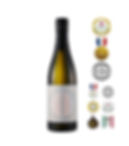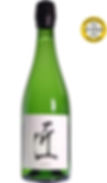"Wine is like a Parisian: sometimes it can be temperamental. To become friends, you have to marry her.
Sake is like a charming Japanese woman: without thinking about marriage, you can have a very good relationship."
Toshiro Kuroda, Paris - France (1950-2017)

"Sake does not burn the throat, sake does not twist the guts!"
Sake is a rice “wine” that comes only from fermentation and not from distillation, with an average of 15.5% ABV.
The method of making sake is an ancient process. No alcoholic beverage like sake undergoes simultaneous saccharification and alcoholic fermentation unlike the process of beer fermentation which is sequential. In the case of wine, it is a simple fermentation since all the elements are already present to produce alcohol from the sugar contained in the grape juice and the yeasts present on the skin of the grape. It is a unique process in the world that makes sake a unique drink.
Sake requires special attention to its understanding due to the subtlety of its aromas produced. Indeed, there are no primary aromas as in wine but only secondary aromas resulting from the decomposition by yeasts and enzymes of the starch of the polished rice. In the vast majority of sakes there are no tertiary flavors either because sake in general is not aged except on rare occasions. The existence of quality sakes of the ginjo type as we know them today with very structured flavors is very recent. They were reserved in the past for sake producers for their presentation at competitions only.
Sake can be associated with food since the Japanese enjoy both eating and drink. The Japanese sake-food pairing is not of the same nature as the classical food-wine pairing: it is a much more discreet pairing, a more delicate relationship, a little distant at the same time but with very few conflicts, at least apparent!... You can eat practically any dish with sake and it is increasingly becoming a great source of inspiration for all chefs and gourmets.
Juyondai Sake 十四代
An exclusive rice sake developed by the Takagi Shuzo brewery, Juyondai is a singular sake. It owes its success to its unique fragrant fruity aroma and fresh taste, which make it even more special in the traditional Japanese sake market. Considered the most mysterious, sought-after and expensive sake in the world.
Junmai Daiginjo Sake 純米大吟醸酒
Pure rice sake with no added alcohol for which the rice remaining after polishing is 50% of its original size, or less.
With lots of fruity and floral aromas, it is considered the highest quality sake that offers a good balance between acidity and umami.
Junmai Ginjo Sake 純米吟醸酒
Pure rice sake with no added alcohol for which the rice remaining after polishing is 60% of its original size, or less.
With less acidity and umami than jummai daiginjo, it has a sweet, floral flavour.
Junmai Sake 純米酒
Pure rice sake with no added alcohol. Junmai tend to be fuller-bodied with a stronger flavor than other categories.
They are generally high in acidity and umami.
Special Type
We have a wide variety of special designation sakes: including yuzushu, cloudy nigori sake, and sparkling sake with double fermentation. In our selection we also include hon mirin. This is actually a cooking condiment, but our artisanal hon mirin is so good you can drink it.









































































